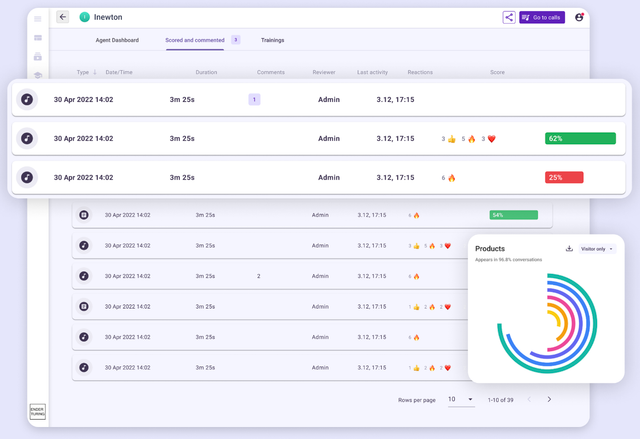Speech Analytics: 8 use cases for your business
Speech analytics is a call analytics tool. The system converts the recordings into text, marks important points - for example, an employee’s rudeness - and calculates metrics for the dynamics of the conversation. With a tool like Ender Turing https://enderturing.com/speech-analytics/ you can get important real-time analytics of voice and digital conversations between your employees and customers. Today we’ll talk about using speech analytics in practice.

Eight uses of speech analytics
Conversations reveal important details about how a business operates. Only over the phone will you find out that customers want the “same product, just a different color” or “a more polite manager.”
What to do with speech analytics data? Use to increase company income. We have collected eight effective techniques for you.
1. Identify your managers' strong and weak themes. One may be great at negotiating contracts, while another may be excellent at upselling. Leverage your employees' strengths. Distribute calls at the PBX level: direct the client to a manager who specializes in a specific request.
2. Use transcripts of your best salespeople to train your employees. Beginners will see what techniques help close a sales application. Transcripts can be printed and given as a study guide for home practice.
3. Evaluate the effectiveness of scripts using speech analytics. It happens that a manager deviates greatly from the script and at the same time exceeds the sales plan. This indicates the ineffectiveness of the current script. Analyze successful employee techniques and include them in the script. And remove phrases that do not promote the client to purchase.
4. Check whether employees tell customers about new promotions. A special dictionary will help with this: if the manager has spoken out the terms of the promotion, the speech recognition center will mark the conversation with a special tag.
5. Quality control staff will be able to quickly resolve conflicts. If a manager has a fight with a client, this will be reflected in the tags. The quality department will immediately listen to the conversation and call the dissatisfied client back: an apology and an offer of a discount or gift will prevent a bad impression of the company from forming. Later, you can sort out a conflict situation with a manager based on the recording of the conversation.
6. The records will reveal the reasons for the refusal of transactions. If every fifth client hangs up after learning that delivery is paid, save him from unpleasant emotions even before the call. Make delivery free or indicate its cost on the website - payment will no longer be a surprise. And, if customers leave after learning that a specific product is out of stock, add this product to the store catalog.
7. When sales fall, sales and marketing departments blame each other. The former complain about untargeted leads, the latter complain about lazy managers. Resolve disputes using call analysis. Track targeted leads and agent performance using tagging. It happens that no one is to blame: sales could have fallen due to seasonality or the economic crisis.
8. Protect your company from information leaks. If a manager discloses confidential information, it will remain in the call records. The security service will quickly detect the leak and contact the offending employee.
Speech analytics will help make employees’ work more efficient. They will learn to sell better, and the company will make more profit. You will identify and punish those who are rude to clients or violate NDA, and reward good managers. Also, from the speech of clients, you will learn what changes in business processes are expected from you.
Summary
If your employees take calls or call clients themselves, it is better to analyze their conversations. Call data will help train sales staff, monitor the work of managers and find out customer needs.
A convenient tool for analyzing calls is speech analytics. It tracks the dynamics of the conversation, provides a transcript and marks important phrases.
When choosing a speech analytics system, focus on the prices and capabilities of the service. Calculate how many minutes per month you want to analyze and multiply this figure by the company’s price list. When comparing the conditions of different services, remember: the deeper the tagging, the more useful data you will receive.